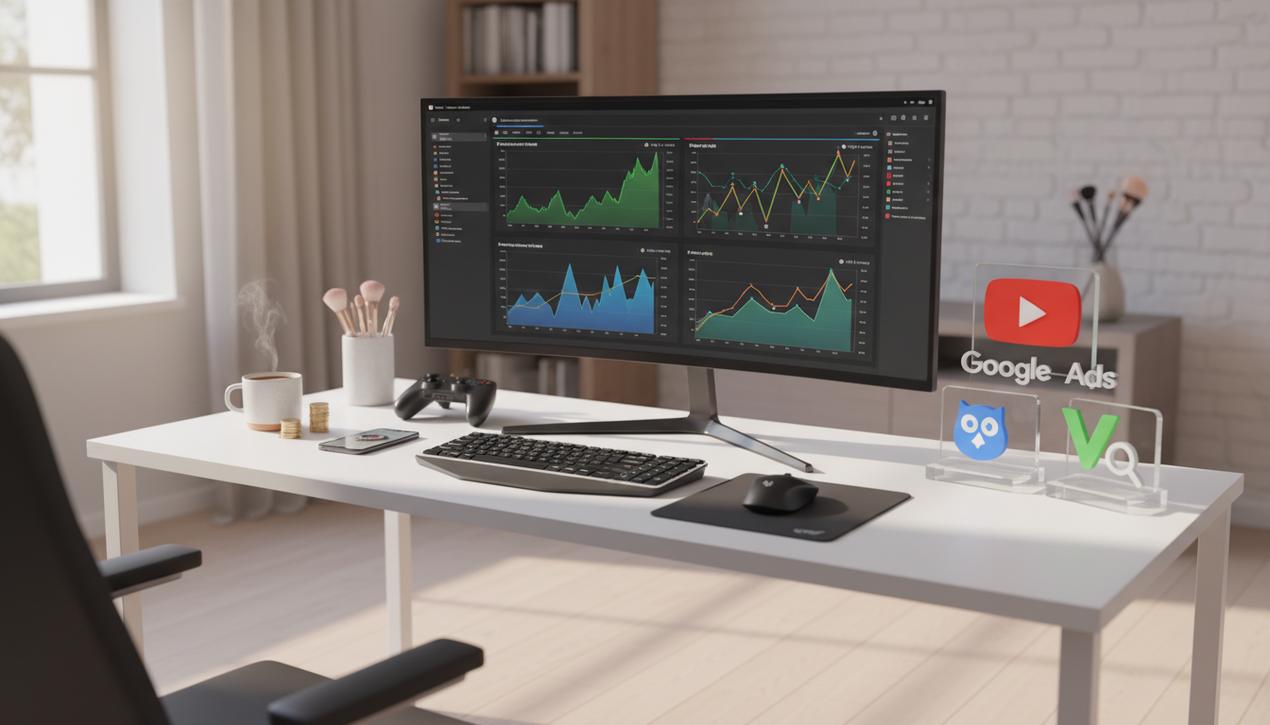A Creator’s Guide to YouTube CPM in 2025


With over 2.7 billion active monthly users globally, YouTube has evolved from a simple video-sharing site into a massive economic engine for content creators. If your channel is eligible for monetization, understanding the metrics that govern your revenue is not just helpful—it’s essential. At the heart of this system lies a frequently discussed but often misunderstood acronym: CPM. Whether you’re a seasoned creator or just starting, mastering the concept of CPM is the key to maximizing your channel’s financial potential. This indicator, which fluctuates based on your niche, the season, and your audience’s demographics, is the ultimate barometer of the value advertisers place on your content. This comprehensive guide breaks down everything you need to know about YouTube CPM in 2025, how it differs from RPM, and most importantly, how to strategically increase it for sustainable growth.
What Is YouTube CPM? (Cost Per Mille)
CPM, or Cost Per Mille (mille is Latin for thousand), is primarily an advertising metric. It represents the gross amount of money an advertiser pays to YouTube for one thousand ad impressions on videos. Think of it as the purchase price for ad space. As such, CPM is an advertiser-centric indicator, reflecting the competitiveness and value of the ad inventory. The more advertisers are willing to pay to reach a specific audience, the higher the CPM for that audience will be.
The calculation for CPM is straightforward:
(Total Advertiser Cost / Total Ad Impressions) x 1,000 = CPM
For example, if an advertiser spends $100 on an ad campaign like those on Google Ads and it receives 20,000 impressions across your videos, the CPM would be ($100 / 20,000) x 1,000 = $5. This means the advertiser is paying $5 for every 1,000 times their ad is displayed. It’s crucial to understand that not every video view generates an ad impression. An impression is only counted when an ad is actually shown to the viewer.
CPM vs. RPM: The Metric That Truly Matters for Creators
While CPM is a foundational metric, it doesn’t represent your actual earnings. The figure that really counts for a creator’s bottom line is the RPM, or Revenue Per Mille. RPM is a creator-centric statistic designed by YouTube to provide a clear, holistic view of a channel’s overall financial performance.
Defining and Calculating RPM
RPM represents your total revenue (after YouTube’s cut) for every 1,000 video views, including those that weren’t monetized. It incorporates all platform-based revenue streams.
The calculation is as follows:
(Total Estimated Revenue / Total Number of Views) x 1,000 = RPM
Total Estimated Revenue includes money generated from ads, YouTube Premium subscriptions, channel memberships, Super Chats, Super Stickers, and Super Thanks. It provides a complete picture of your channel’s earning efficiency.
Why Your RPM Is Almost Always Lower Than Your CPM
There are two primary reasons why your RPM figure will consistently be lower than your CPM:
- The Revenue Share: YouTube takes a 45% commission on ad revenue generated on your videos. The CPM reflects 100% of what the advertiser pays, but you, the creator, only receive 55% of that amount.
- Non-Monetized Views: RPM is calculated based on all views your video gets. This includes views where no ad was shown, perhaps because the user has an ad blocker, no suitable ad was available, or the video was deemed not ad-friendly for that specific view. CPM, on the other hand, only counts actual ad impressions.
In short: CPM measures the advertiser’s cost, while RPM measures your actual earnings per thousand views.
Key Factors That Influence Your YouTube CPM Rate
Your YouTube CPM is not a fixed number; it’s a dynamic value influenced by a multitude of factors. Understanding these levers is the first step toward building a more profitable content strategy.
1. Content Niche
This is arguably the most significant factor. Advertisers will pay a premium to reach audiences with high purchasing intent. Niches like personal finance and technology consistently outperform entertainment.
- High CPM Niches: Personal Finance, Investing, Real Estate, E-commerce, Software, and Tech Reviews can often see CPMs from $15 to $50+.
- Mid-Tier CPM Niches: Education, Health & Fitness, and Beauty can range from $8 to $20.
- Lower CPM Niches: Gaming, Vlogs, and general entertainment content typically have lower CPMs, from $2 to $7, due to a broader, often younger audience.
2. Audience Geography
Advertisers allocate bigger budgets to target audiences in “Tier 1” countries with higher disposable incomes. A channel with a majority audience in the United States, United Kingdom, Canada, or Australia will have a significantly higher CPM than a channel with an audience primarily in “Tier 3” countries.
3. Seasonality
Advertising budgets fluctuate throughout the year. CPMs typically peak in the fourth quarter (Q4), from October to December, driven by holiday shopping like Black Friday and Christmas. Conversely, they often drop in the first quarter (Q1) as companies reset their annual marketing budgets.
4. Video Length and Ad Formats
The length of your video directly impacts monetization potential. Videos longer than eight minutes are eligible for mid-roll ads, which can be inserted at multiple points during the video. This drastically increases the number of ad impressions per view. Furthermore, non-skippable ads and bumper ads generally have a higher CPM than standard skippable in-stream ads.
5. Content “Ad-Friendliness”
Your content must comply with YouTube’s advertiser-friendly content guidelines. Controversial topics, excessive profanity, or sensitive subjects can lead to limited or no ads (“yellow dollar sign”), which severely impacts your CPM and RPM.
8 Actionable Strategies to Increase Your YouTube CPM in 2025
Boosting your CPM requires a deliberate, strategic approach. Here are eight concrete actions you can take to make your content more valuable to advertisers.
1. Master Your YouTube SEO
Effective Search Engine Optimization attracts a qualified, intentional audience. Research and use relevant keywords in your titles, descriptions, and tags. Tools like TubeBuddy and VidIQ can help you identify high-value keywords that both users and advertisers are searching for in your niche.
2. Create Professional, High-Impact Thumbnails
Your thumbnail is the first impression. A clear, compelling, and professional thumbnail increases your click-through rate (CTR). A high CTR signals to the YouTube algorithm that your content is engaging, which can lead to more impressions and attract premium advertisers.
3. Produce Videos Longer Than 8 Minutes
This is one of the most powerful levers you can pull. Crossing the eight-minute threshold unlocks mid-roll ads. By strategically placing one or two ad breaks in longer videos, you can more than double the ad impressions per view, directly boosting your RPM.
4. Enable All Relevant Ad Formats
Go into the monetization settings for each video and ensure all ad types are enabled (skippable, non-skippable, bumper, etc.). This gives YouTube’s ad system maximum flexibility to serve the highest-paying ad available for each specific viewer.
5. Target High-Value Niches and Topics
If you’re starting out or can pivot your content, focus on subjects that attract high-spending advertisers. Educational content, product reviews, tutorials, and financial advice are often far more lucrative than general entertainment.
6. Cultivate a Deeply Engaged Community
Encourage your audience to interact by asking questions, running polls, and responding to comments. A highly engaged community is a loyal audience, which increases overall channel watch time and sends strong signals to advertisers that your viewers are valuable.
7. Maintain Advertiser-Friendly Content
Scrupulously adhere to YouTube’s guidelines. Creating “brand-safe” content ensures you have access to the largest possible pool of advertisers, including premium brands that pay higher CPMs.
8. Analyze Your Data in YouTube Studio
Regularly dive into your YouTube Analytics. Identify which videos have the highest RPM. Analyze them to understand why they perform so well. Is it the topic? The format? The length? Replicate what works across your future content strategy.
Understanding and optimizing your YouTube CPM is a marathon, not a sprint. It’s about consistently creating value for your audience, which in turn creates value for advertisers. By focusing on content quality and developing the right essential marketing skills, you can transform your channel into a more stable and predictable source of income. The CPM is more than just a number; it represents the market’s recognition of your hard work and influence within the ever-expanding creator economy.




